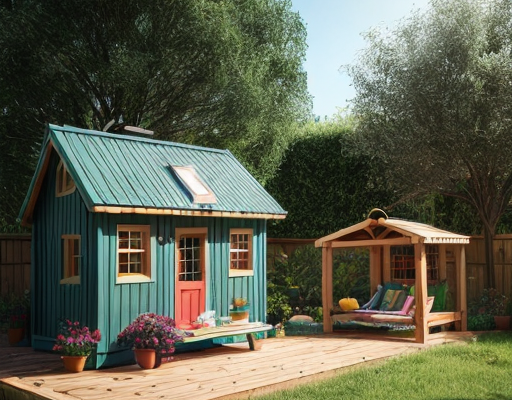
How to Plan a Family DIY Birdhouse and Bird Feeder Building Day
How to Plan a Family DIY Birdhouse and Bird Feeder Building Day
Introduction to a Family DIY Project
Engaging in a family DIY project is not just a means to create something functional; it’s a wonderful opportunity for bonding, learning, and creating lasting memories. Building DIY birdhouses and bird feeders can provide a hands-on educational experience for kids, teach valuable skills, and help wildlife in your area. This comprehensive guide will steer you through planning a delightful and productive family building day.
Benefits of a DIY Birdhouse and Feeder Project
Before diving into the ‘how,’ let’s talk about the ‘why.’ DIY birdhouse and feeder projects offer numerous benefits: they can enhance the local ecosystem by providing shelter and food to birds; they’re an educational tool for teaching ecology and carpentry; and they’re a source of outdoor entertainment. Additionally, watching birds visit your handiwork can be incredibly rewarding for the entire family.
Getting Started: Planning Your Project
Success in your DIY project starts with good planning. Begin by deciding on a date that works for everyone and gather materials in advance. You’ll need wood (untreated and unpainted), screws, a hammer or screwdriver, and perhaps some child-friendly paint. Research bird-specific house and feeder designs, as different species have different preferences.
Choosing the Right Tools and Materials
While professional tools can handle the job, ensure you have child-friendly alternatives available. Safety gloves and glasses should be a part of your equipment. Use soft wood like pine or cedar to make construction easier and safer. Avoid toxic substances; remember, birds will be your ultimate clientele.
Designing Your Birdhouse and Feeder
Select designs that are appropriate for your local bird species. Simple box designs are great for beginners. Ensure the birdhouse has proper ventilation, an entry hole size specific to your target bird, and no perch (which can attract predators). For feeders, look for designs that allow for easy re-filling and cleaning.
Step-by-Step Construction Guide
Break your building process down into detailed steps. Mark and pre-cut the wood to ensure safety. Guide children through measuring, line drawing, and the initial stages of construction. Assemble the pieces step-by-step, reviewing each stage before progressing to ensure everyone’s on the same track.
Assembly Tips and Tricks
To streamline assembly, use screws rather than nails for easy corrections. Pre-drilling holes can help prevent the wood from splitting. When working together, assign roles so that each family member knows their task, whether it’s holding pieces in place, screwing, or painting.
Customization and Decoration
Encouraging creativity is part of the fun. Once the structure is built, decorate it! Use water-based paints to add colors and patterns. This is an opportunity for children to express their artistic flair while ensuring the birdhouse and feeder remain environmentally safe for birds.
Environmentally-Safe Paints and Materials
It’s essential when decorating to choose non-toxic, water-based paints that won’t chip or release harmful substances. The safety of the birds should always be considered when selecting materials for the birdhouse and feeder.
Safety First: Ensuring a Child-Friendly Project
Safety can’t be overstated. Keep sharp tools out of reach of young children, and supervise their use of hammers or screwdrivers. Teach them the importance of safety equipment, and always lead by example. Don’t forget sunscreen and hats if you plan to work outside.
Installation and Placement Tips
Now that your birdhouse and feeder are ready, choosing the right location is crucial. Install them high enough to be safe from predators yet accessible for maintenance. Ensure feeders are placed away from busy areas to provide a peaceful dining spot for your feathered friends.
Selecting the Best Spot for Your Birdhouse
To increase the likelihood of a bird moving in, face the entry hole away from the prevailing wind and ensure there’s a clear flight path. If you’re aiming to attract a specific species, research their preferred habitat.
Interacting with Birds Responsibly
Remember to respect the birds’ space. Teach children to observe from a distance without disrupting the birds. This reinforces the idea of conservation and the importance of caring for our wildlife.
Continued Learning and Observation
Once your birdhouse and feeder are in use, they can become excellent educational tools. Set up a birdwatching schedule and log the different bird species you see. Discuss their behaviors, feeding patterns, and talk about the importance of biodiversity.
Incorporating Tech: A Modern Twist on Birdwatching
Modern technology can enhance the experience. Use apps to identify bird songs, install a webcam to watch birds remotely, or plot your sightings on interactive maps. This can add an exciting tech angle to the natural exploration.
Maintenance and Upkeep of Your Birdhouse and Feeder
To keep your birdhouse and feeder in good condition, involve the family in regular maintenance. Regularly clean out birdhouses after nesting season and replenish feeders with appropriate birdseed. Inspect them for wear and tear and make repairs when necessary.
Ways to Expand Your Bird-Friendly Backyard
Your DIY project can be just the beginning. Consider planting native flowers to attract more birds, put out a birdbath, or create bird-friendly landscaping. Each addition helps support local wildlife and adds to your family’s nature-focused habitat.
Conclusion: A New Family Tradition
A successful family DIY birdhouse and feeder building day can set the stage for a new tradition. It’s a tangible way to teach care for the environment, learn skills, and spend valuable time together. So, gather your tools, your plans, and your family, and start building not just birdhouses, but also a stronger bond with nature—and each other.

